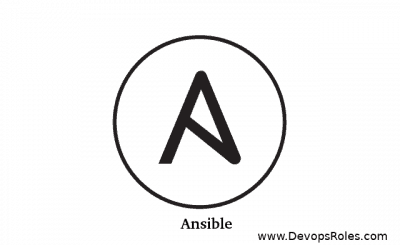Table of Contents
- 1 Introduction
- 2 What is YAML?
- 3 Common Causes of YAML Syntax Errors
- 4 How to Fix Syntax Error While Loading YAML in Ansible
- 5 Advanced Troubleshooting Techniques
- 6 Best Practices to Avoid YAML Syntax Errors
- 7 Frequently Asked Questions
- 7.1 1. What is the most common cause of YAML syntax errors in Ansible?
- 7.2 2. Can I use tabs instead of spaces in YAML?
- 7.3 3. How can I check for YAML syntax errors before running my playbook?
- 7.4 4. Are there tools to automatically fix YAML syntax errors?
- 7.5 5. What are YAML anchors and aliases, and how can they cause errors?
- 8 Conclusion
Introduction
Ansible, a powerful open-source automation tool, relies heavily on YAML (YAML Ain’t Markup Language) for defining configurations, tasks, and playbooks. While YAML is known for its simplicity, it’s also extremely sensitive to formatting. A simple mistake in syntax – like improper indentation or misplaced characters – can result in the dreaded error: ERROR! Syntax Error while loading YAML.
This guide delves deeply into the world of YAML syntax issues in Ansible, providing real-world examples, practical solutions, and best practices to help you avoid these errors. Whether you’re new to YAML or an experienced Ansible user, this guide will help you troubleshoot and fix common syntax problems, ensuring your playbooks run seamlessly.
What is YAML?
YAML, short for YAML Ain’t Markup Language, is a human-readable format used for data serialization. It’s often favored for configuration files because of its readability and simplicity. In Ansible, YAML is used to define playbooks, inventory files, roles, and variables.
While YAML may appear straightforward, it has strict formatting rules that make it prone to errors, especially when misused in automation tools like Ansible.
Common Causes of YAML Syntax Errors
1. Indentation Issues
Indentation is crucial in YAML. Ansible will throw errors if your indentation is inconsistent. YAML does not allow the use of tabs; instead, you must use spaces for indentation.
Example Error:
tasks:
- name: Install packages
yum:
name: httpd
state: present # Incorrect indentation hereCorrected Version:
tasks:
- name: Install packages
yum:
name: httpd
state: present # Properly indented2. Use of Tabs Instead of Spaces
YAML is very strict about using spaces for indentation, not tabs. Even a single tab in place of a space will cause an error.
Example Error:
tasks:
- name: Start service
service:
name: httpd
state: startedIf tabs were used instead of spaces, Ansible would throw a syntax error.
Solution:
Replace all tabs with spaces, ideally using 2 or 4 spaces per indentation level.
3. Improper List Formatting
YAML uses dashes (-) to indicate lists. Lists must be formatted correctly, with consistent indentation.
Example Error:
packages:
- nginx
- postgresql
- redis # This extra indentation causes a syntax errorCorrected Version:
packages:
- nginx
- postgresql
- redis # All list items are now at the same level4. Quotes Mismanagement
Improper use of quotes can result in YAML syntax errors. Sometimes, users might use both single and double quotes incorrectly, causing confusion.
Example Error:
message: "Welcome to Ansible'Corrected Version:
message: "Welcome to Ansible"Make sure to be consistent with either single (') or double (") quotes and avoid mixing them.
5. Invalid Characters
YAML will throw an error if it encounters any invalid characters, such as tab characters or control characters. In addition, characters like &, @, and # have special meanings in YAML, and improper use can lead to syntax issues.
How to Fix Syntax Error While Loading YAML in Ansible
When you encounter the “ERROR! Syntax Error while loading YAML” in Ansible, follow these steps to resolve the issue:
Step-by-Step Debugging Process
1. Review the Error Message
Ansible typically provides the line and column number where the YAML syntax error occurred. Use this information to identify the issue.
2. Check Indentation Levels
Ensure all indentation is consistent. YAML is very particular about indentation, so use spaces (not tabs) and make sure each nested block is indented correctly.
3. Look for Incorrect List Formatting
If you’re working with lists, make sure all list items are properly aligned and start with a dash (-).
4. Ensure Proper Use of Quotes
Check if you are mixing single and double quotes improperly. Correct any inconsistencies to ensure all quotes are properly paired.
5. Use a YAML Validator
To speed up the debugging process, use a YAML validator or linter (like YAML Lint) to automatically check for syntax errors.
Advanced Troubleshooting Techniques
Using YAML Linting Tools
YAML linting tools can be extremely helpful in identifying and resolving syntax errors. These tools will parse your YAML file and point out any issues, such as incorrect indentation, improper list formatting, or misused quotes.
Example YAML Linters:
- YAML Lint: A web-based tool to check YAML syntax.
- Prettier: An open-source code formatter that supports YAML and can enforce consistent formatting in your files.
Ansible Playbook –syntax-check
Ansible provides a built-in command to check for syntax errors in your playbooks before executing them. This can save you time by catching syntax issues early.
Command:
ansible-playbook your-playbook.yml --syntax-checkYAML Anchors & Aliases
If you’re using advanced YAML features like anchors and aliases, incorrect usage can lead to syntax errors. Ensure that you’re following the correct syntax for these features.
Example of YAML Anchors:
default_values: &default_values
state: present
tasks:
- name: Install nginx
yum:
name: nginx
<<: *default_valuesBest Practices to Avoid YAML Syntax Errors
- Use a YAML Linter Regularly: Incorporate a linter into your workflow to automatically detect syntax issues.
- Use Version Control: Tools like Git can help track changes in your playbooks, making it easier to spot where an error might have been introduced.
- Maintain Consistent Indentation: Set your text editor to use spaces instead of tabs and be consistent with how many spaces you use.
- Validate YAML Before Running: Always validate your YAML syntax with Ansible’s
--syntax-checkcommand before deploying a playbook.
Frequently Asked Questions
1. What is the most common cause of YAML syntax errors in Ansible?
The most common cause is inconsistent indentation. YAML is indentation-sensitive, and using tabs instead of spaces or misaligning blocks can cause syntax errors.
2. Can I use tabs instead of spaces in YAML?
No, YAML requires the use of spaces for indentation. Tabs are not allowed and will result in syntax errors.
3. How can I check for YAML syntax errors before running my playbook?
You can use Ansible’s --syntax-check option to validate your playbook’s YAML syntax before running it.
4. Are there tools to automatically fix YAML syntax errors?
Yes, you can use tools like YAML Lint or code formatters like Prettier to automatically detect and fix syntax issues in YAML files.
5. What are YAML anchors and aliases, and how can they cause errors?
YAML anchors and aliases allow you to reuse blocks of configuration. Incorrectly referencing or formatting anchors can lead to syntax errors.
Conclusion
YAML syntax errors are common but can be easily resolved with careful attention to detail. The most frequent issues stem from incorrect indentation, improper use of lists, and mismanagement of quotes. By following the guidelines in this deep guide and utilizing tools like linters, you can ensure your Ansible playbooks are free of YAML syntax errors. Incorporating best practices like regular validation and version control can further help you avoid these issues in the future. Thank you for reading the DevopsRoles page!

